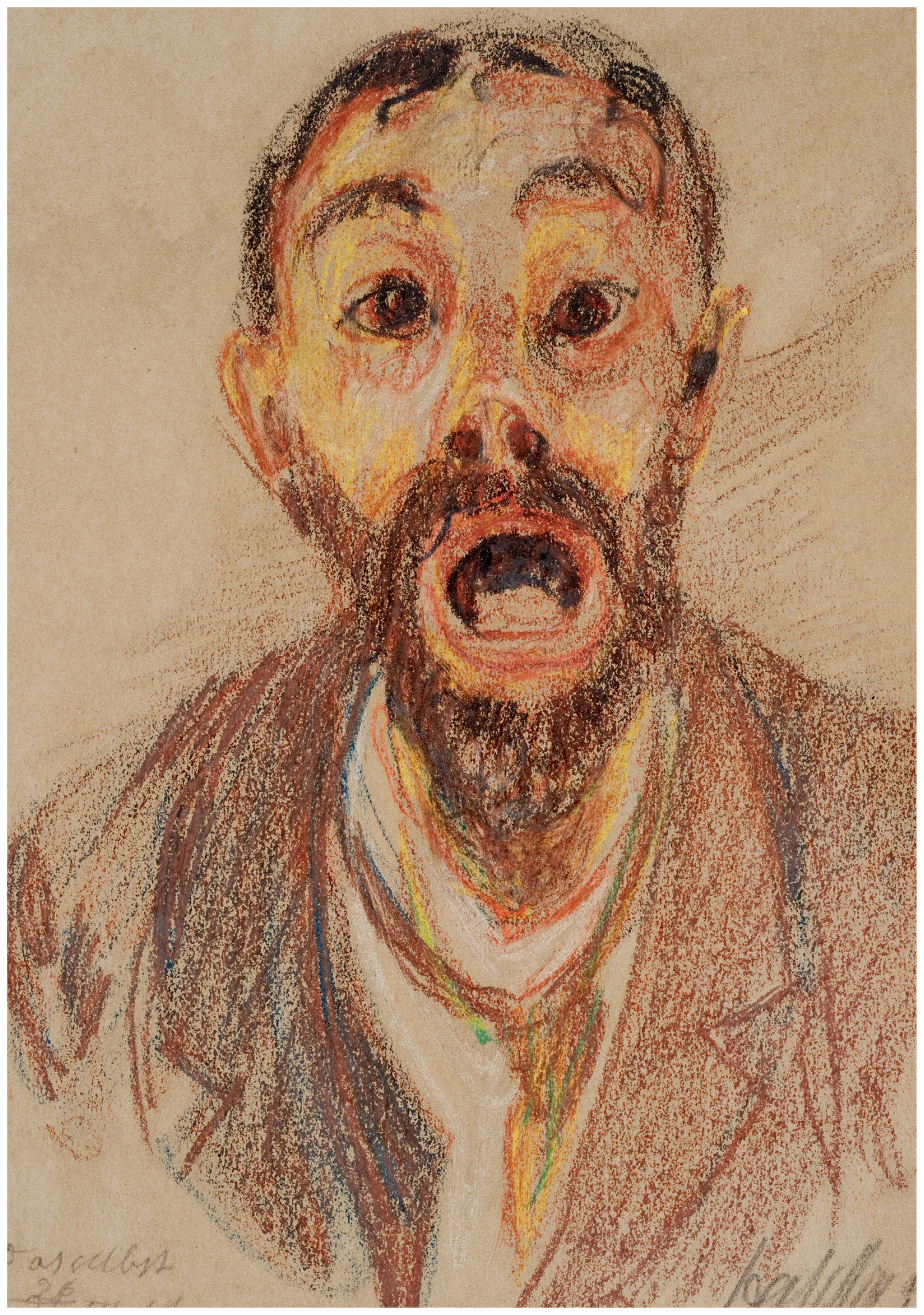
© Prinzhorn Collection, University Hospital Heidelberg, Inv. No. 3018
Franz Karl Bühler’s self-portrait, Das Selbst, dated March 1919. In Prinzhorn’s eyes, Bühler’s art reached the pinnacle of creativity at this time.
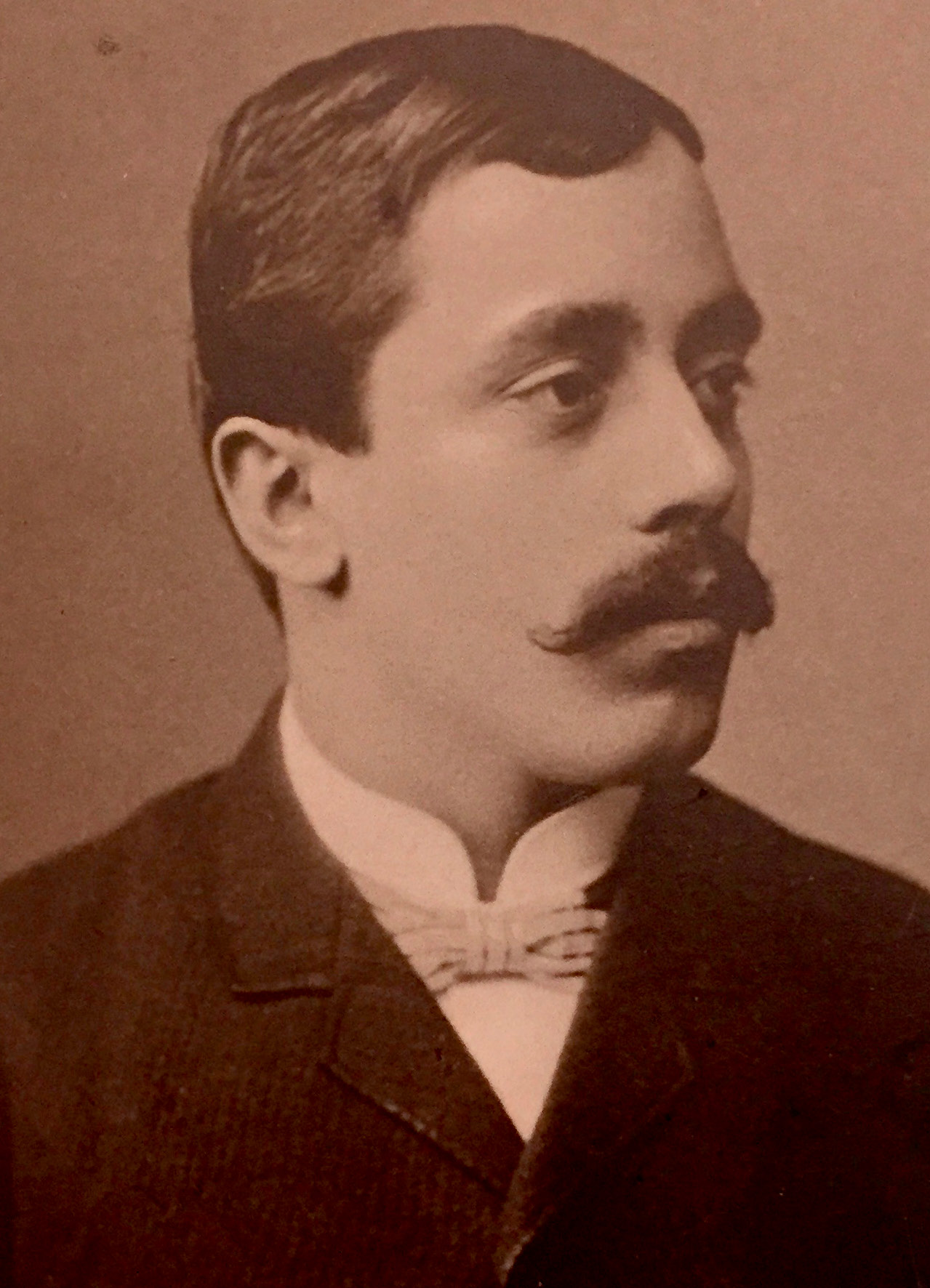
Franz Karl Bühler photographed in Offenburg in the 1890s
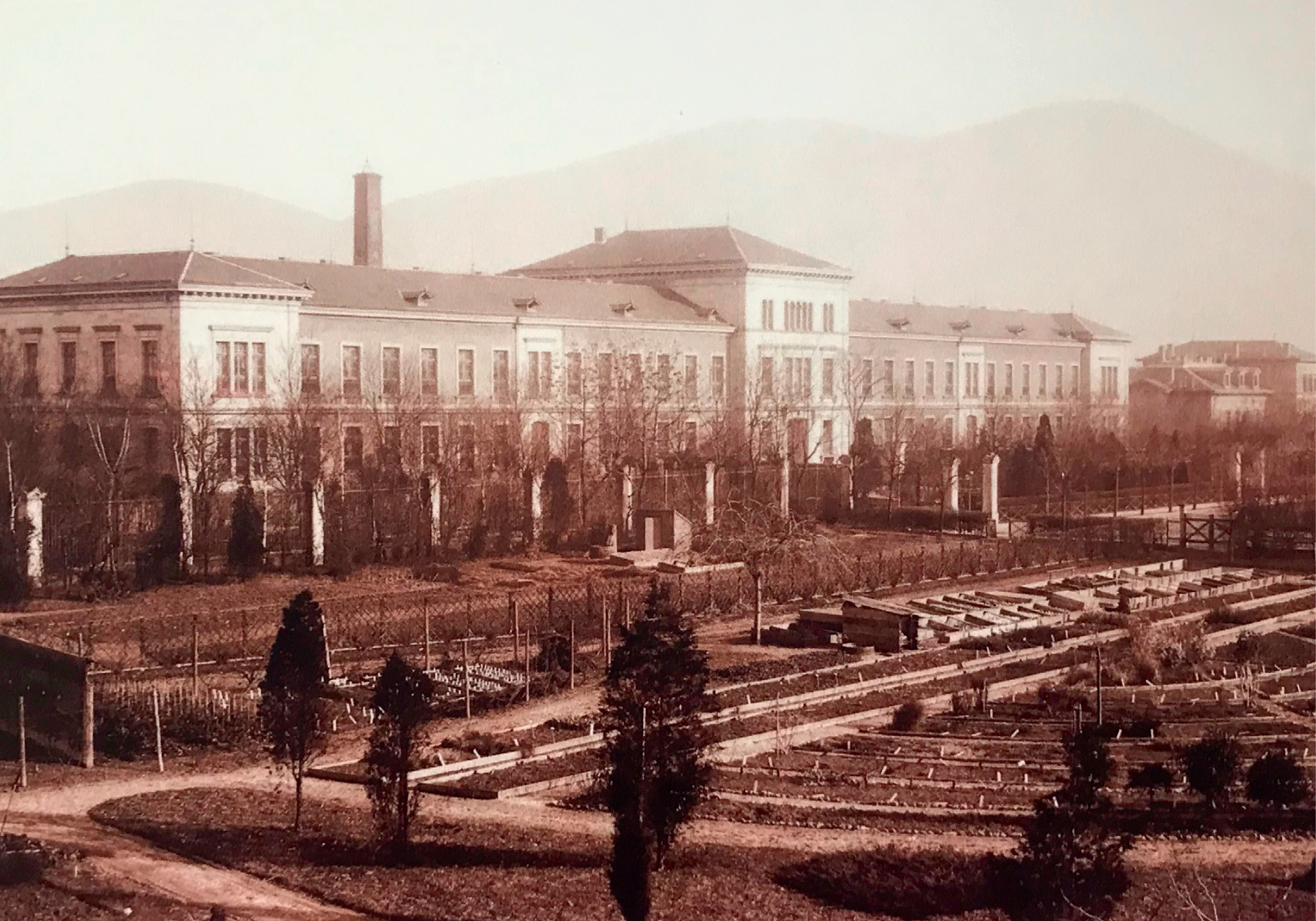
The University of Heidelberg Psychiatric Clinic, 1895

Hans Prinzhorn circa 1922

Bühler’s Der Würgengel (The choking angel), which Prinzhorn compared to work by Grünewald and Dürer
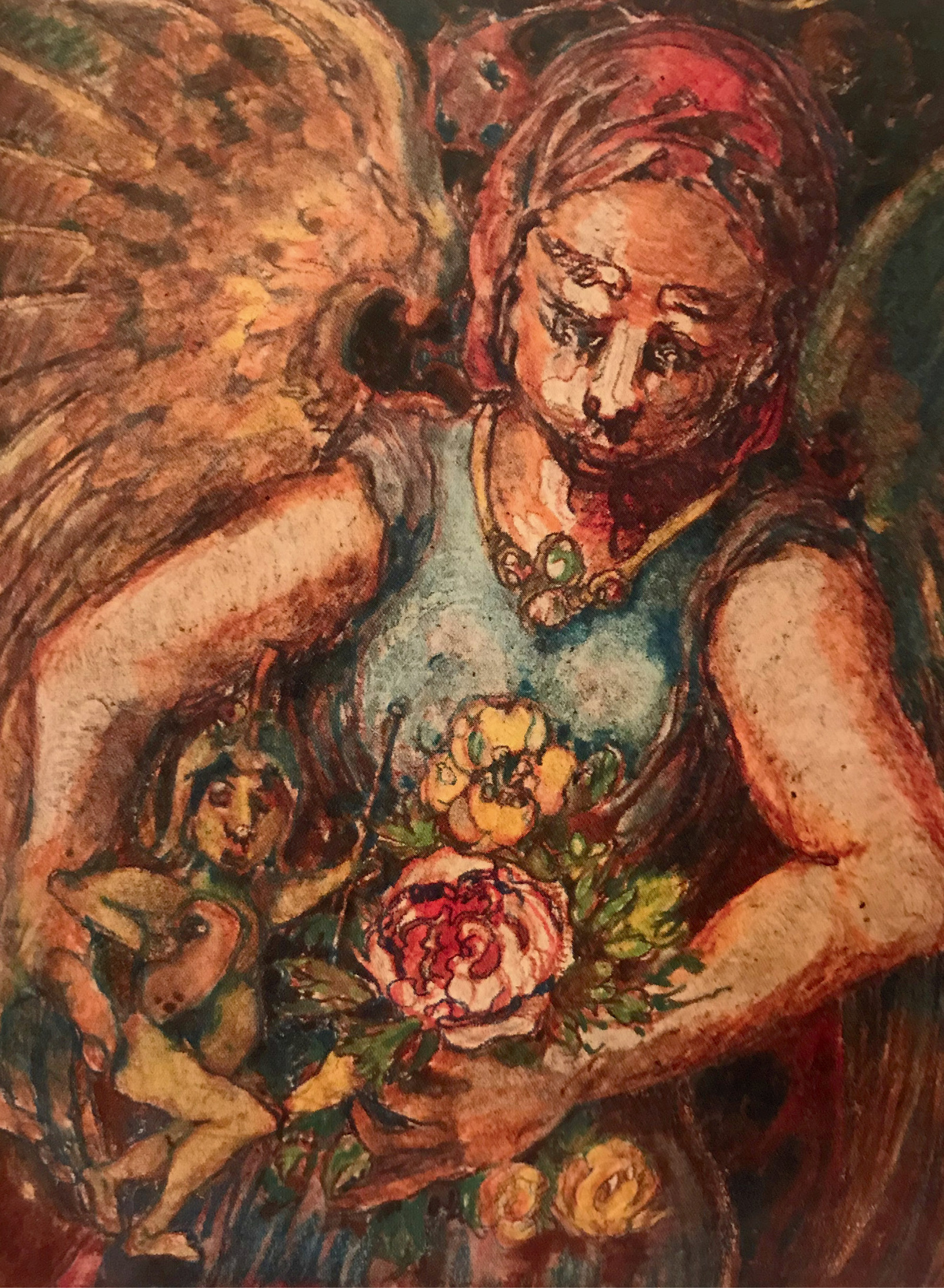
© Prinzhorn Collection, University Hospital Heidelberg, Inv. No. 2945
Franz Karl Bühler, “Untitled” (Angel playing with dolls)

© Prinzhorn Collection, University Hospital Heidelberg, Inv. No. 184
August Natterer, “Hexenkopf” (Witch’s head), circa 1911–1917

© Prinzhorn Collection, University Hospital Heidelberg, Inv. No. 4267
Else Blankenhorn, “Untitled I,” before 1917; thought to be a self-portrait

Hindenburg, by Karl Genzel, represents the German field marshal Paul von Hindenburg. The artist wished to draw attention to his fat cheeks, large ears, and protuberant nose.
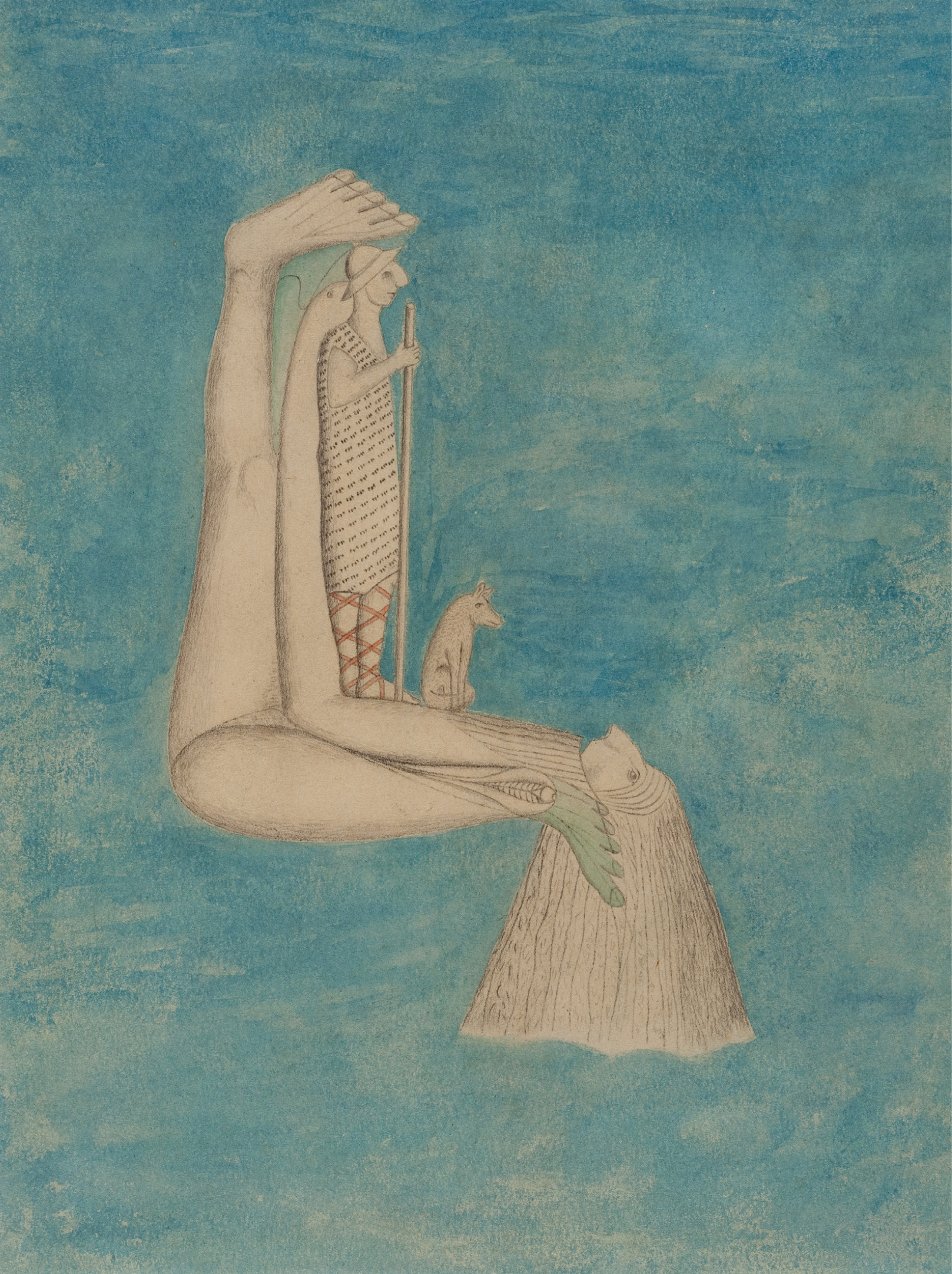
© Prinzhorn Collection, University Hospital Heidelberg, Inv. No. 176
The Prinzhorn artist August Natterer’s work was especially popular with the Surrealists, including Max Ernst. Natterer’s Wunder-Hirte II (Miracle shepherd II), 1911-1917, above, clearly influenced Ernst’s Oedipe (Oedipus), 1931, following. Ernst borrowed Natterer’s vision of a female form floating freely in space.
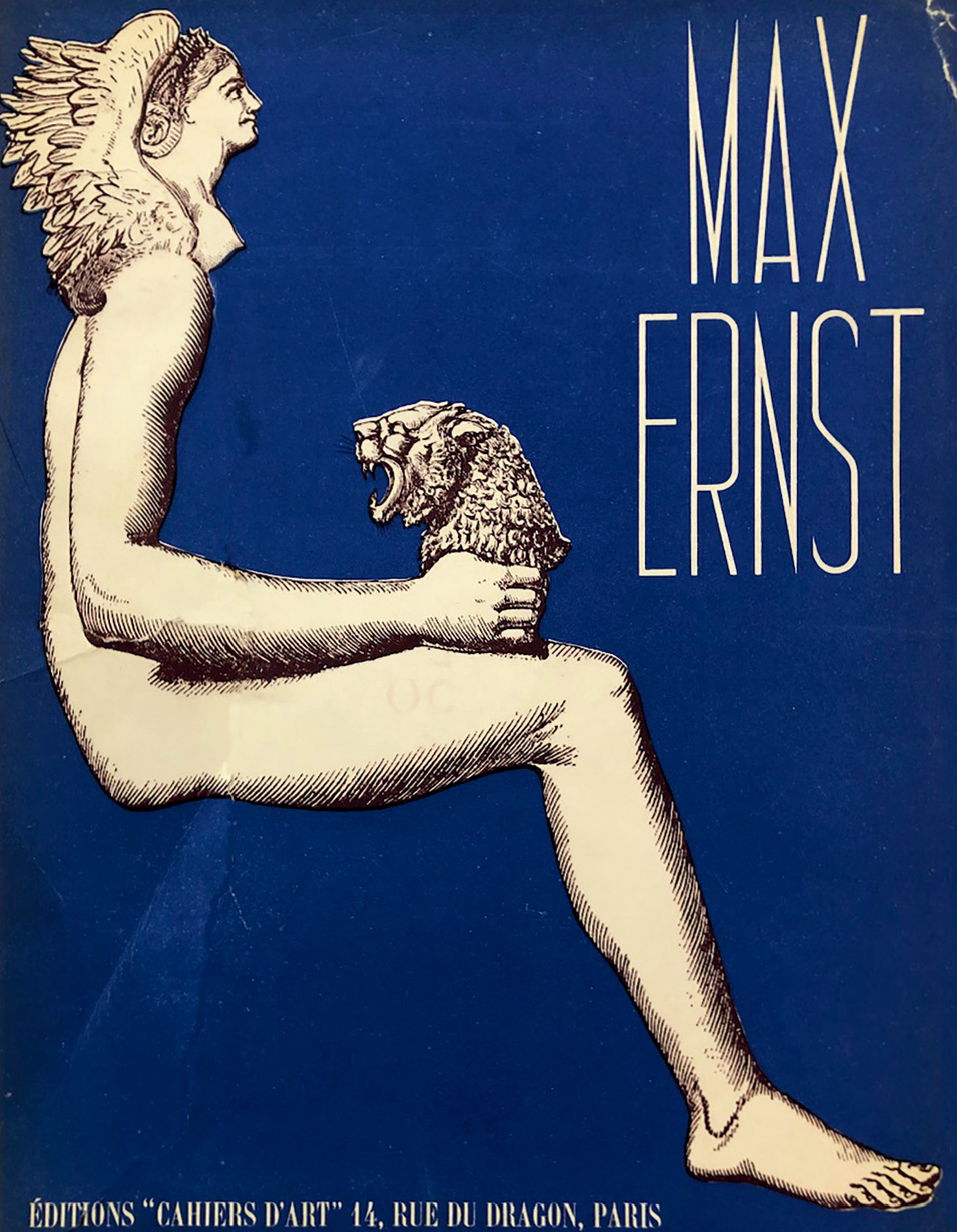
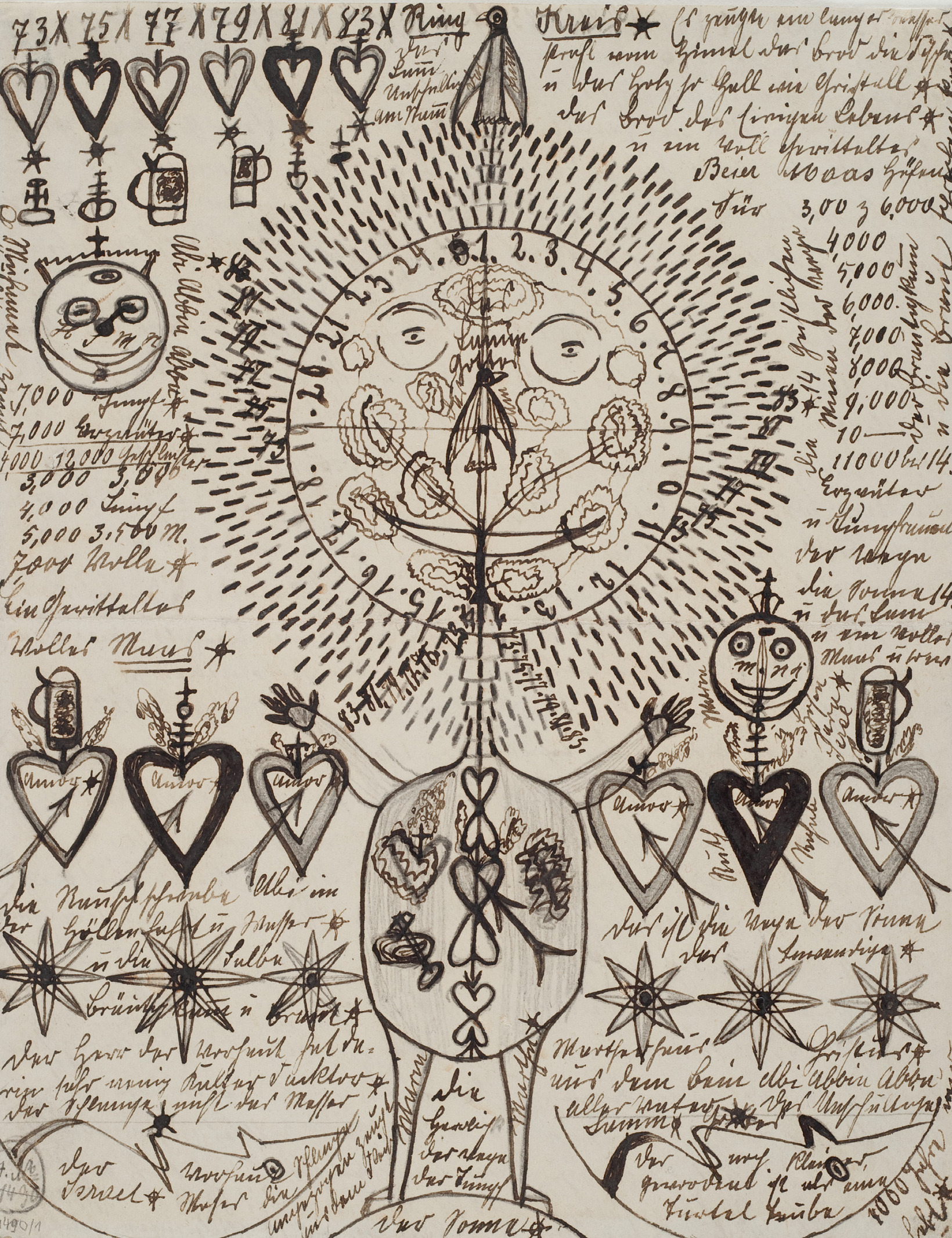
© Prinzhorn Collection, University Hospital Heidelberg, Inv. No. 1490
Paul Klee was also entranced by Prinzhorn’s book. The artist’s 1923 work Prophetisches Weib (Prophetic woman), following, may have been inspired by Johann Knopf’s Lamm Gottes (The lamb of God), above, from the Heidelberg collection.
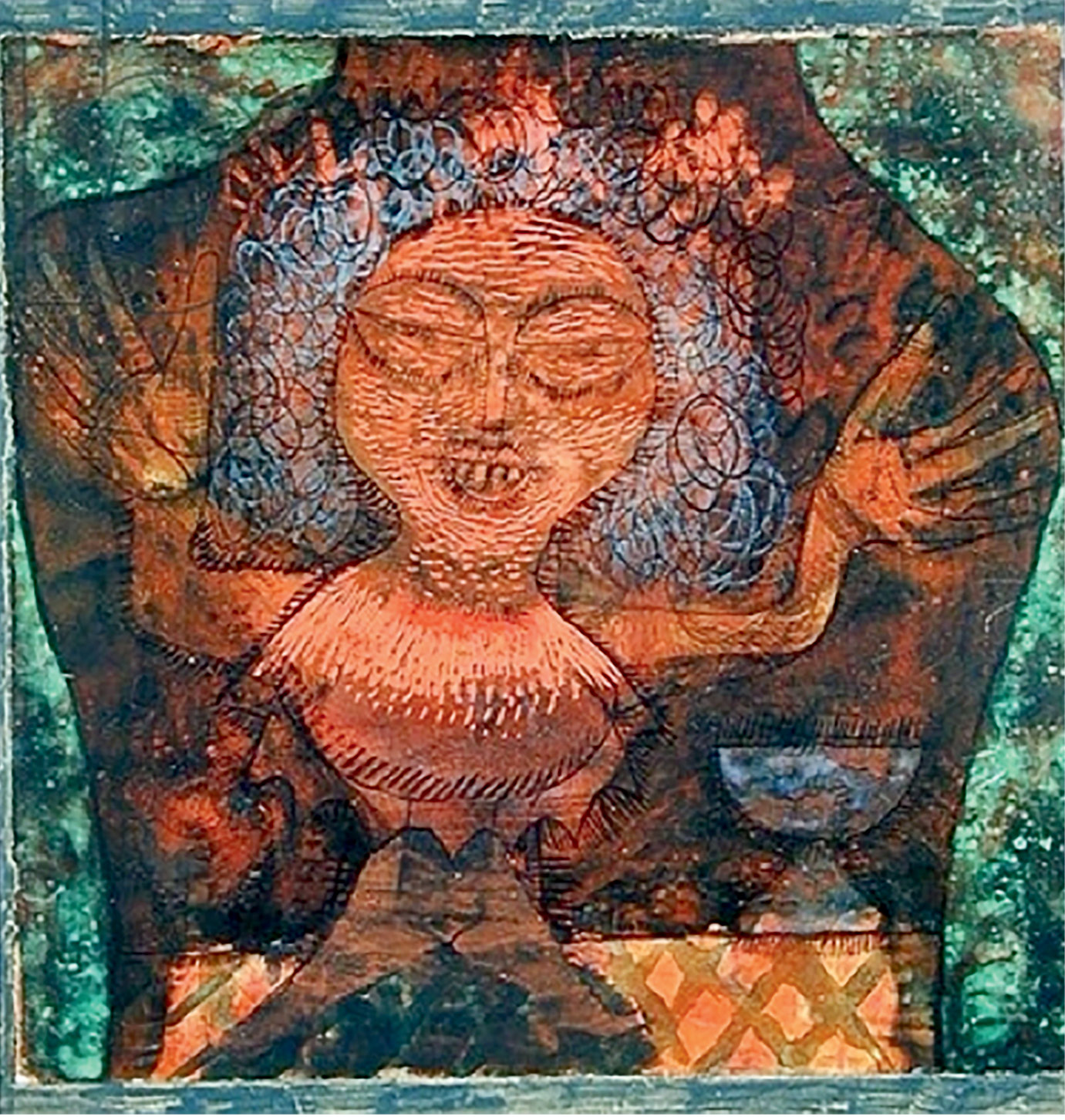
© bpk/Hamburger Kunsthalle/Christoph Irrgang
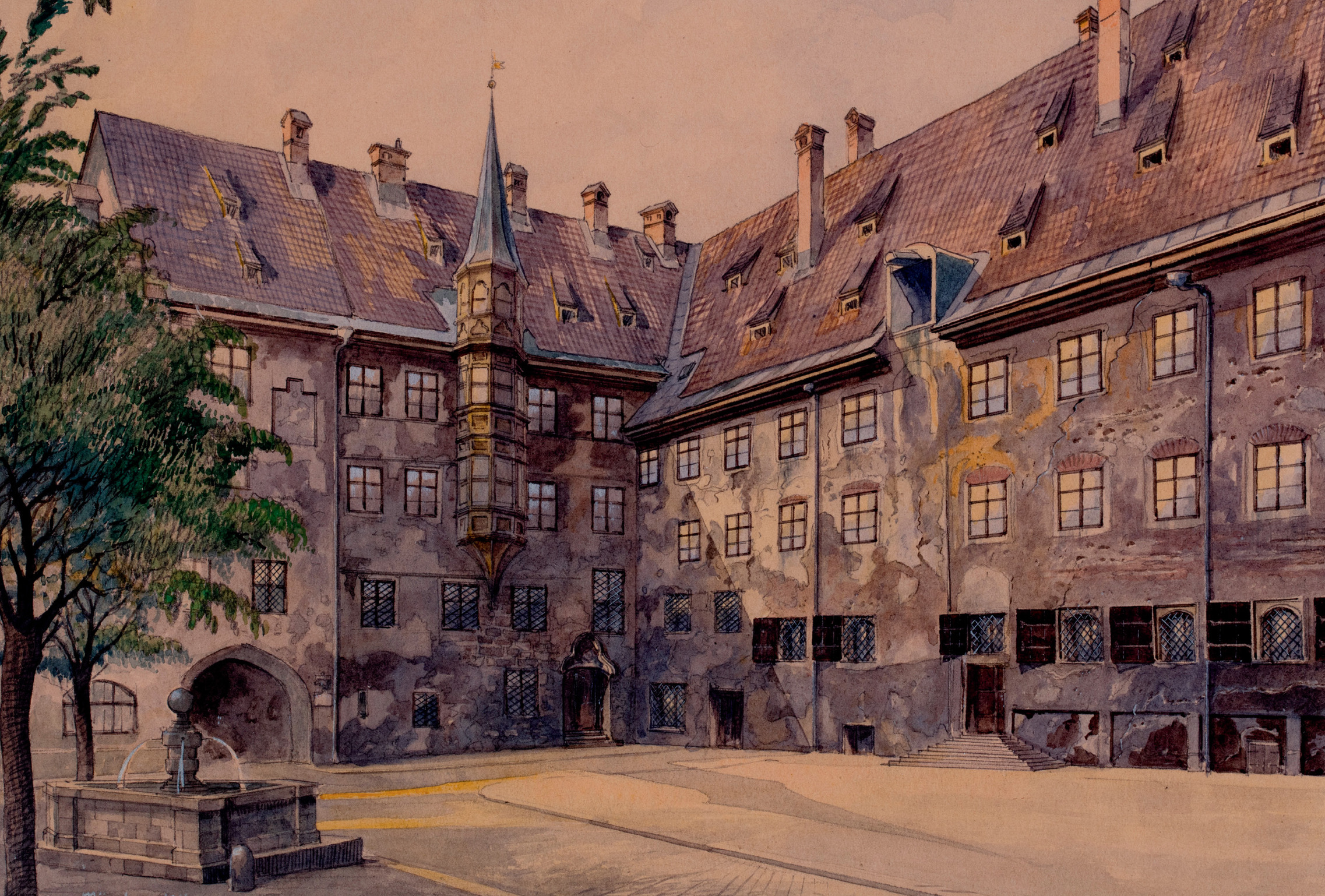
© US Army Center of Military History
Alter Hof, Munich, Adolf Hitler, 1914. Hitler showed some ability painting buildings but was poor at depicting people. He was rejected from the Vienna Academy for drawing “few heads.”
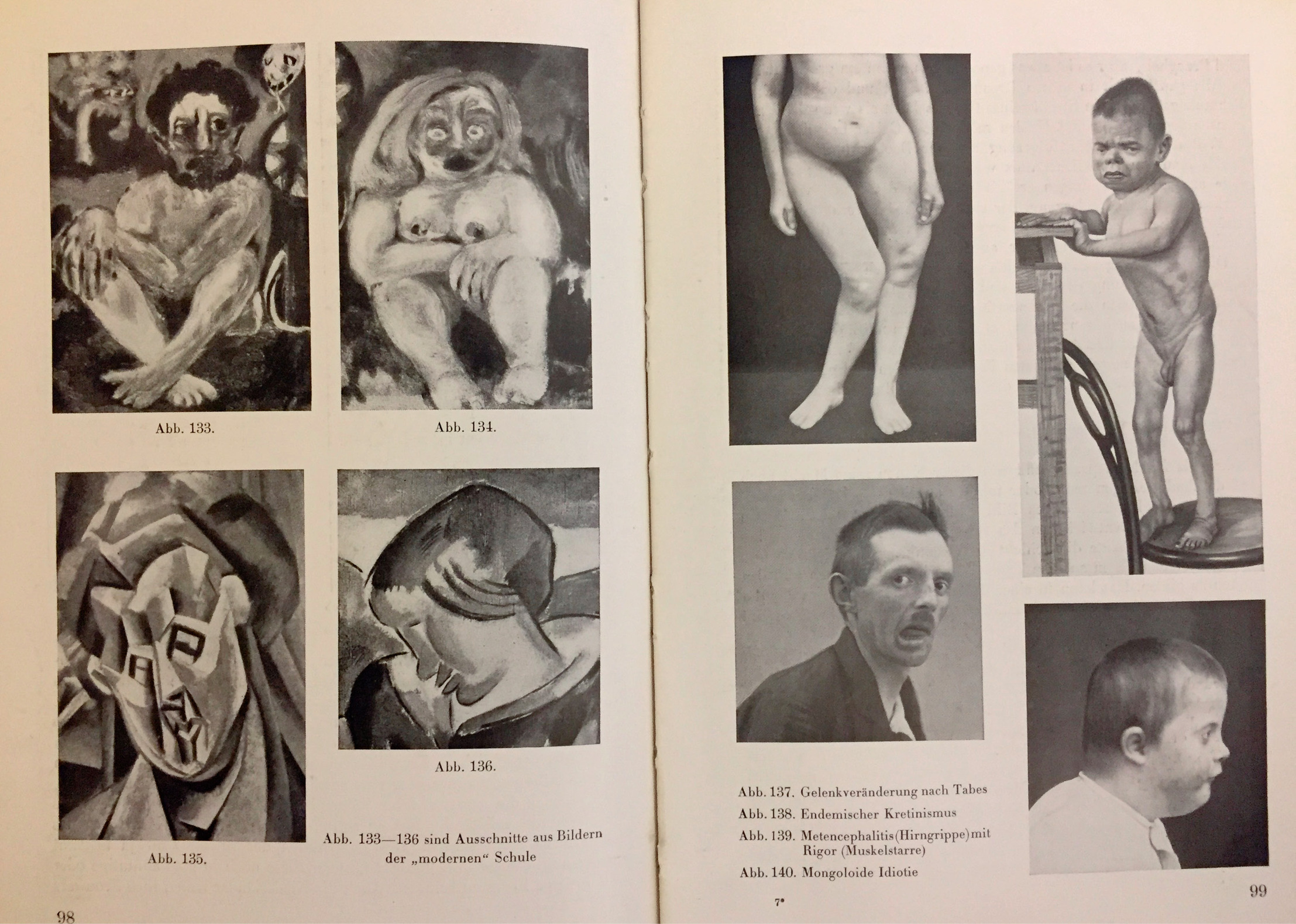
Paul Schultze-Naumburg’s 1928 book Kunst und Rasse (Art and race) made an explicit link between modern art and disability, juxtaposing paintings with case photographs.

© Universitätsbibliothek Heidelberg/Kladderadatsch
“Der Bildhauer Deutschlands” (The sculptor of Germany), a 1933 cartoon from Kladderadatsch magazine, reflected Hitler’s plan to genetically reengineer the German people as an artist remodels an artwork.